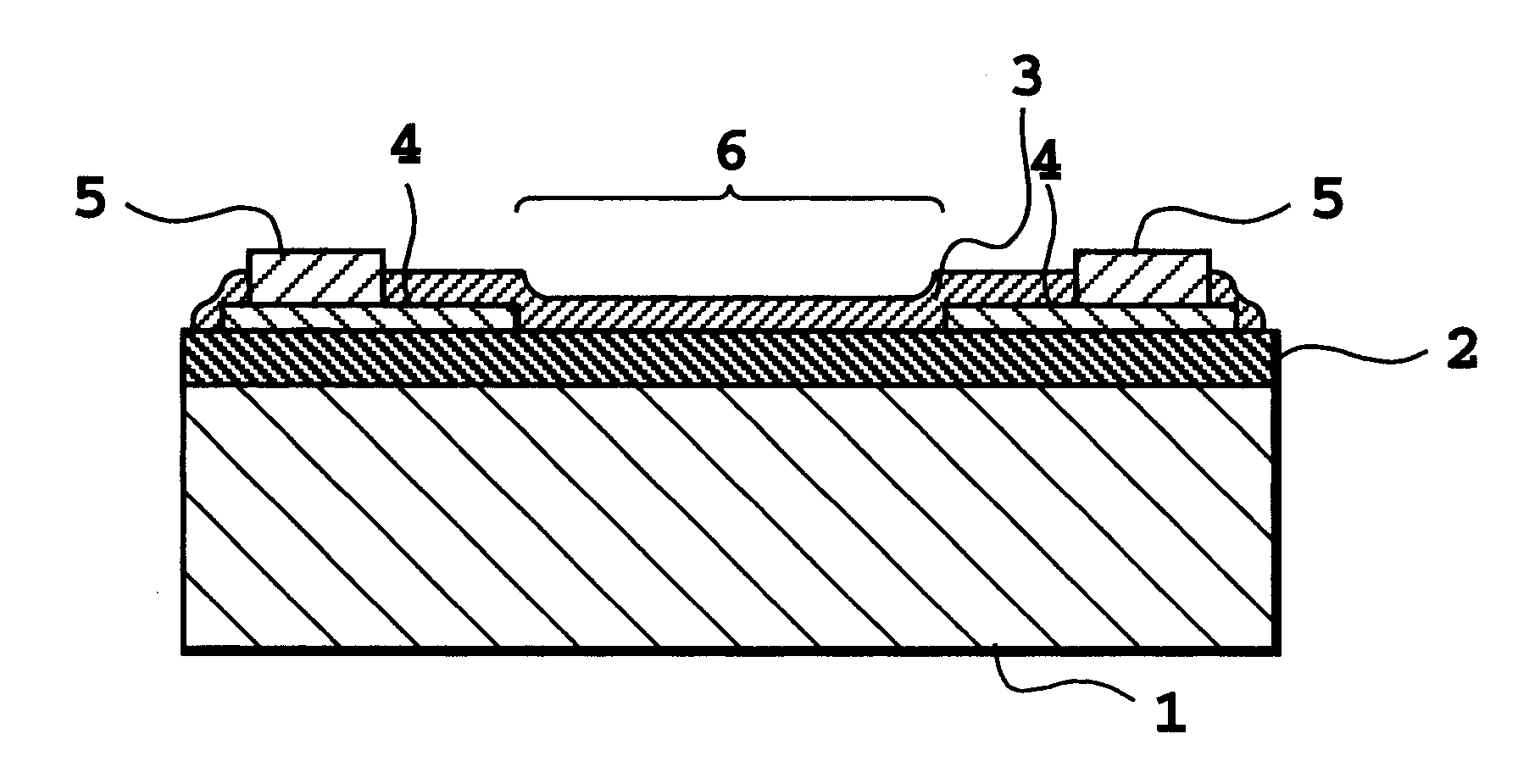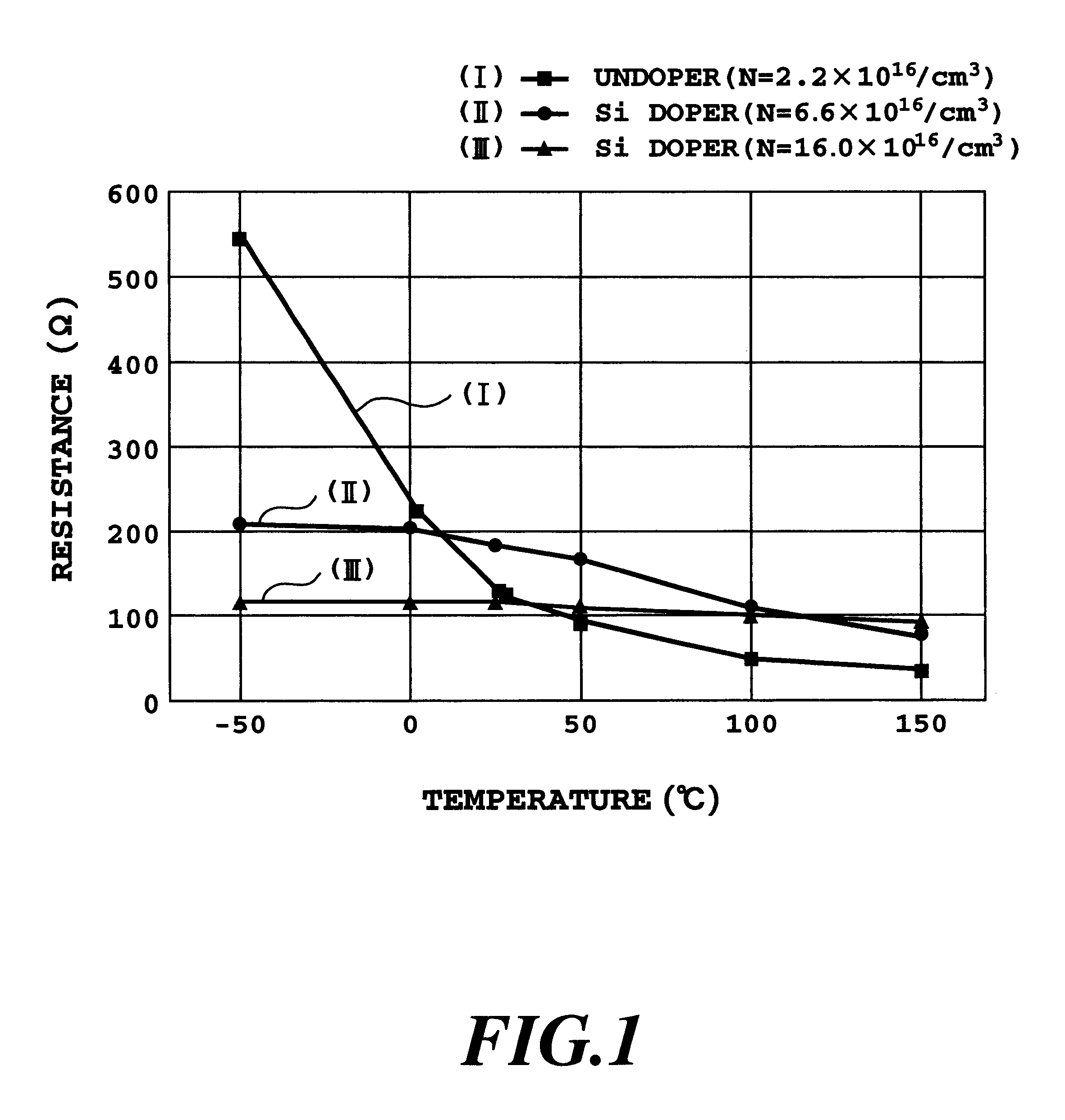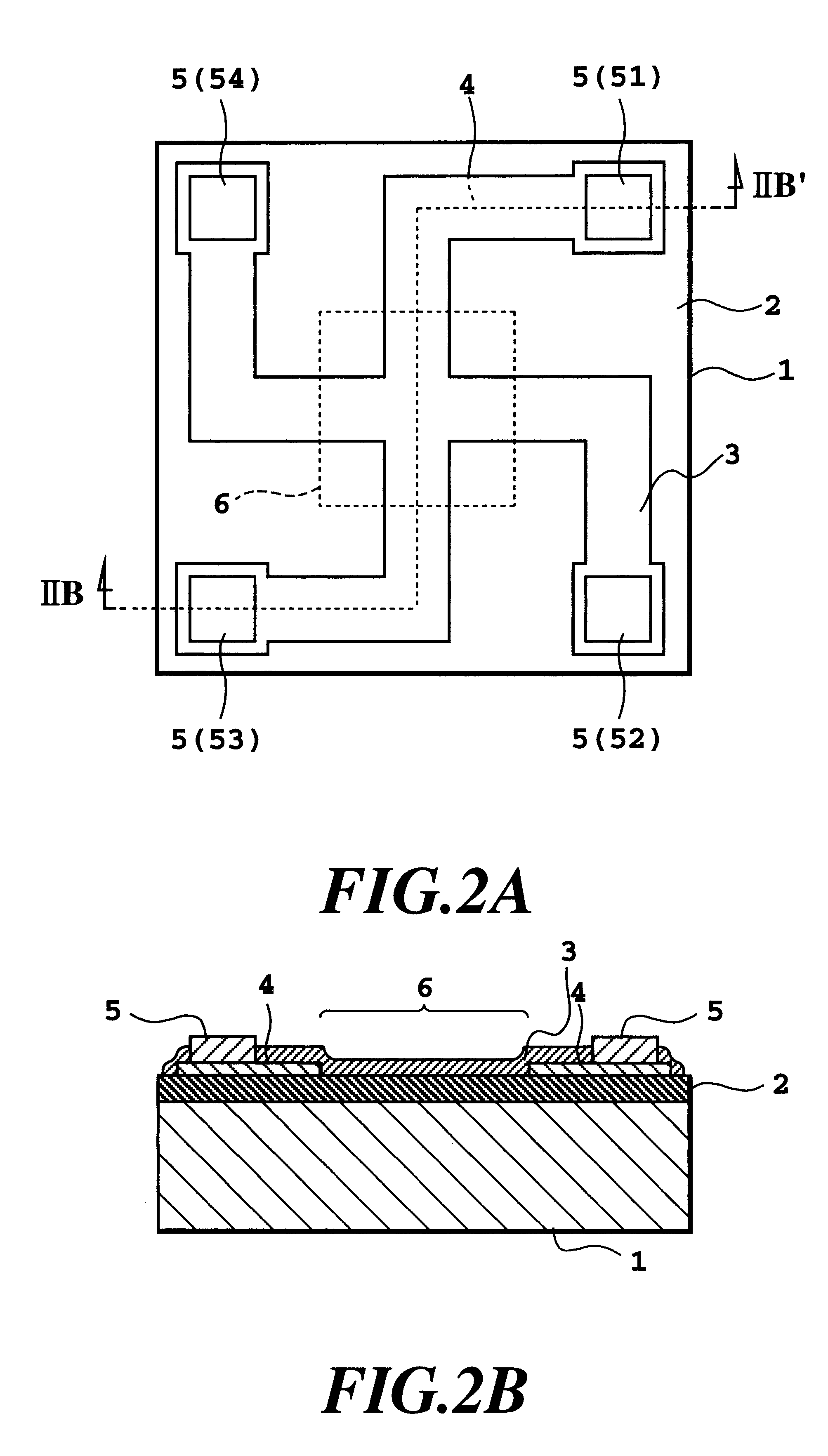Magnetic sensor, magnetic sensor apparatus, semiconductor magnetic resistance apparatus, and production method thereof
a magnetic sensor and semiconductor technology, applied in the field of magnetic sensor, magnetic sensor apparatus, semiconductor magnetic resistance apparatus, and production method thereof, can solve the problems of difficult to meet strict requirements, difficult to drive, and inability to pick up electrical noise from magnetic sensors using insb
- Summary
- Abstract
- Description
- Claims
- Application Information
AI Technical Summary
Benefits of technology
Problems solved by technology
Method used
Image
Examples
embodiment 1
(Embodiment 1)
A Hall device was produced using the following procedures.
In the present embodiment, a thin film production apparatus specially fabricated for compound semiconductor thin film production was used. The basic construction of the apparatus involves use of a super-high-vacuum chamber, a holder for setting a substrate and a heating control apparatus capable of heating the substrate at a constant temperature. Further a plurality of evaporation sources (Knudsen cells) capable of separately controlling the vapor pressures of materials such as In, Sb, As and the like are provided. In this apparatus, time-series evaporation control of the vapor pressures of the respective materials, and according to a heating program of the substrate by the substrate heating apparatus, single crystal growth of a desired material uniformly on the substrate can be carried out. In addition to the above functions, as necessary, a thin film production apparatus provided with doping means capable of v...
embodiment 2
(Embodiment 2)
A Hall device in which the semiconductor thin film layer is doped with Si was produced using the following procedures.
Specifically, in the present embodiment, a thin film production apparatus specially fabricated for compound semiconductor thin film production was used. The basic construction of the fabrication apparatus includes a super-high-vacuum chamber, a holder for setting a substrate and a heating control apparatus capable of heating the substrate at a constant temperature, and a plurality of evaporation sources (Knudsen cells) capable of separately controlling the vapor pressures of materials such as In, Sb, As and the like. In this apparatus, time-series evaporation control of the vapor pressures of the respective materials, and according to a heating program of the substrate by the substrate heating apparatus, single crystal growth of a desired material uniformly on the substrate can be carried out. In addition to the above functions, as necessary, a thin fil...
embodiment 3
(Embodiment 3)
A bridge-formed magnetic resistance device was produced as follows.
As in Embodiment 2, a Si-doped InSb thin film and an intermediate layer the same as in Embodiment 2 were formed on a flat surface, semi-insulating GaAs substrate. The thus formed 1.0 micron thick InSb thin film had an electron mobility of 35,000 cm / Vsec, and an electron concentration of 7.times.10.sup.16 / cm.sup.3. Next, to form an intermediate layer and an InSb thin film into the desired patter as shown in FIG. 5, a resist film was formed and etched as in Embodiment 2. Part of the intermediate layer was removed by photoetching to form short bar electrodes comprising a plurality of thin metal thin films, a wiring part, and bonding electrodes on the InSb thin film.
Next, as in Embodiment 2, a gold layer was formed only on the surface of the bonding electrodes. Thus, a plurality of bridge-formed magnetic resistance devices of the present invention were simultaneously produced on a single substrate, having ...
PUM
| Property | Measurement | Unit |
|---|---|---|
| electron mobility | aaaaa | aaaaa |
| thickness | aaaaa | aaaaa |
| thickness | aaaaa | aaaaa |
Abstract
Description
Claims
Application Information
 Login to View More
Login to View More - R&D
- Intellectual Property
- Life Sciences
- Materials
- Tech Scout
- Unparalleled Data Quality
- Higher Quality Content
- 60% Fewer Hallucinations
Browse by: Latest US Patents, China's latest patents, Technical Efficacy Thesaurus, Application Domain, Technology Topic, Popular Technical Reports.
© 2025 PatSnap. All rights reserved.Legal|Privacy policy|Modern Slavery Act Transparency Statement|Sitemap|About US| Contact US: help@patsnap.com



